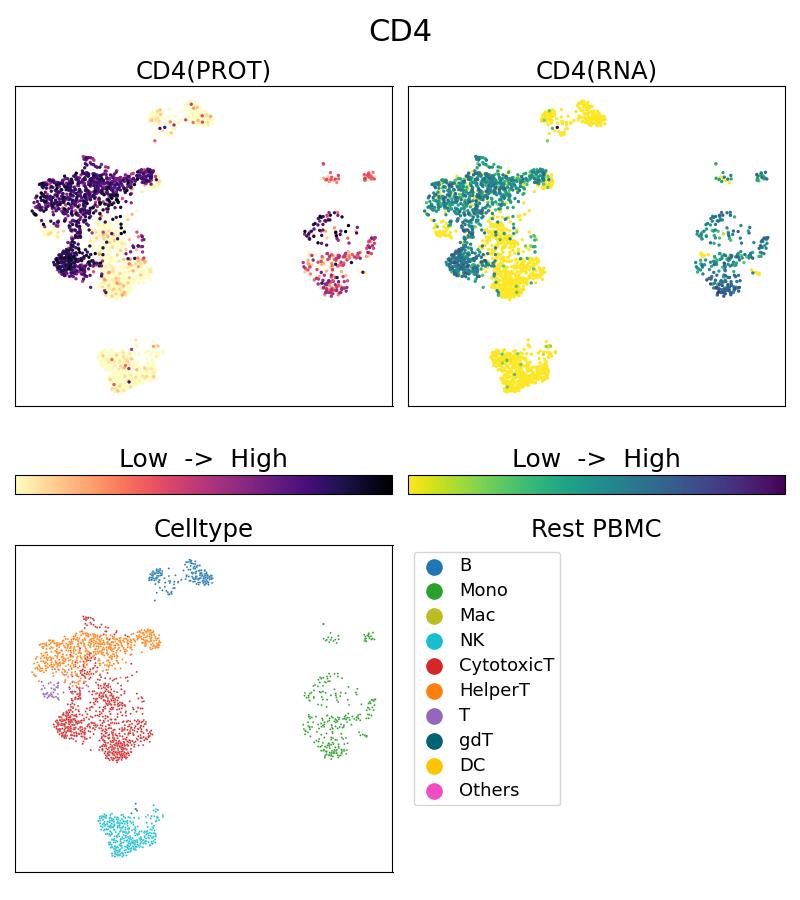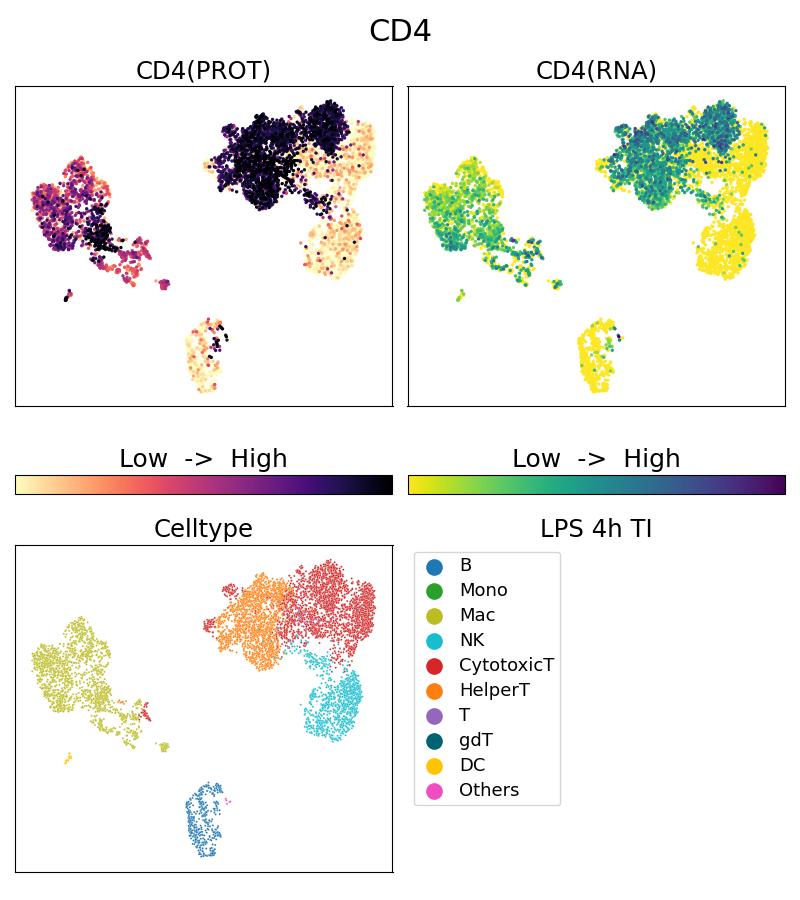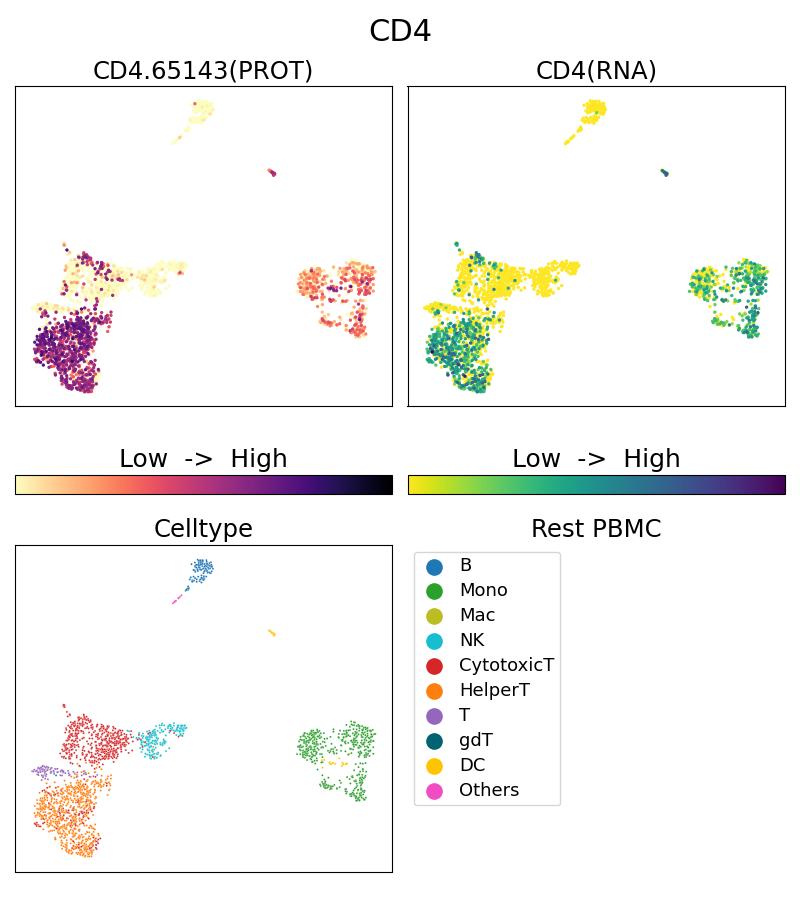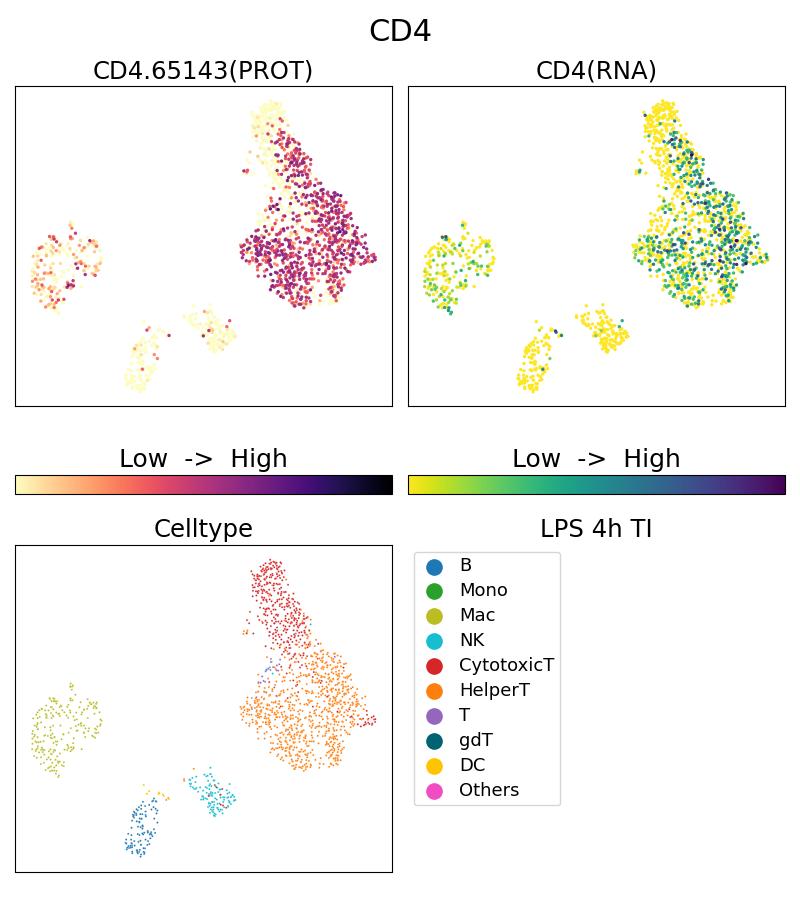验证数据展示
经过测试的应用
| Positive Single Cell (Intra) detected in | 10x Genomics Gene Expression Flex with Feature Barcodes and Multiplexing product. |
| Positive Single Cell detected in | 10x Genomics Gene Expression Flex with Feature Barcodes and Multiplexing product. |
推荐稀释比
| 应用 | 推荐稀释比 |
|---|---|
| SINGLE CELL (INTRA) | <0.5ug/test |
| SINGLE CELL | <0.5ug/test |
| It is recommended that this reagent should be titrated in each testing system to obtain optimal results. | |
产品信息
G65143-1-5C targets CD4 in Single Cell (Intra), Single Cell applications and shows reactivity with Human samples.
| 经测试应用 | Single Cell (Intra), Single Cell Application Description |
| 经测试反应性 | Human |
| 免疫原 | N/A 种属同源性预测 |
| 宿主/亚型 | Mouse / IgG1 |
| 抗体类别 | Oligo Conjugate |
| 产品类型 | Monoclonal |
| 全称 | MultiPro® 5CFLX Anti-Human CD4 (RPA-T4) |
| 别名 | CD4, CD4 molecule, CD4mut |
| 计算分子量 | 55 kDa |
| GenBank蛋白编号 | BC025782 |
| 基因名称 | CD4 |
| Gene ID (NCBI) | 920 |
| ENSEMBL Gene ID | ENSG00000010610 |
| RRID | AB_3673919 |
| 偶联类型 | 5CFLX |
| 完整寡核苷酸序列 | CGGAGATGTGTATAAGAGACAGGTCTTACAACGCAGTCCCATATAAGAAA |
| 条形码序列 | GTCTTACAACGCAGT |
| 形式 | Liquid |
| UNIPROT ID | P01730 |
| 储存缓冲液 | PBS with 1mM EDTA and 0.09% sodium azide , pH 7.3 |
| 储存条件 | 2-8°C Stable for one year after shipment. |
背景介绍
CD4 is a 55-kDa transmembrane glycoprotein expressed on T helper cells, majority of thymocytes, monocytes, macrophages, and dendritic cells (PMID: 9304802; 12213222). CD4 is an accessory protein for MHC class-II antigen/T-cell receptor interaction. It plays an important role in T helper cell development and activation (PMID: 9539765; 3112582). CD4 serves as a receptor for the human immunodeficiency virus (HIV) (PMID: 9304802).
Protocols
| Our current MultiPro staining protocol for the cocktail | Download protocol |
| 10x Genomics CG000149_Demonstrated Protocol CellSurface Protein Labeling_Rev D.pdf | Download protocol |



